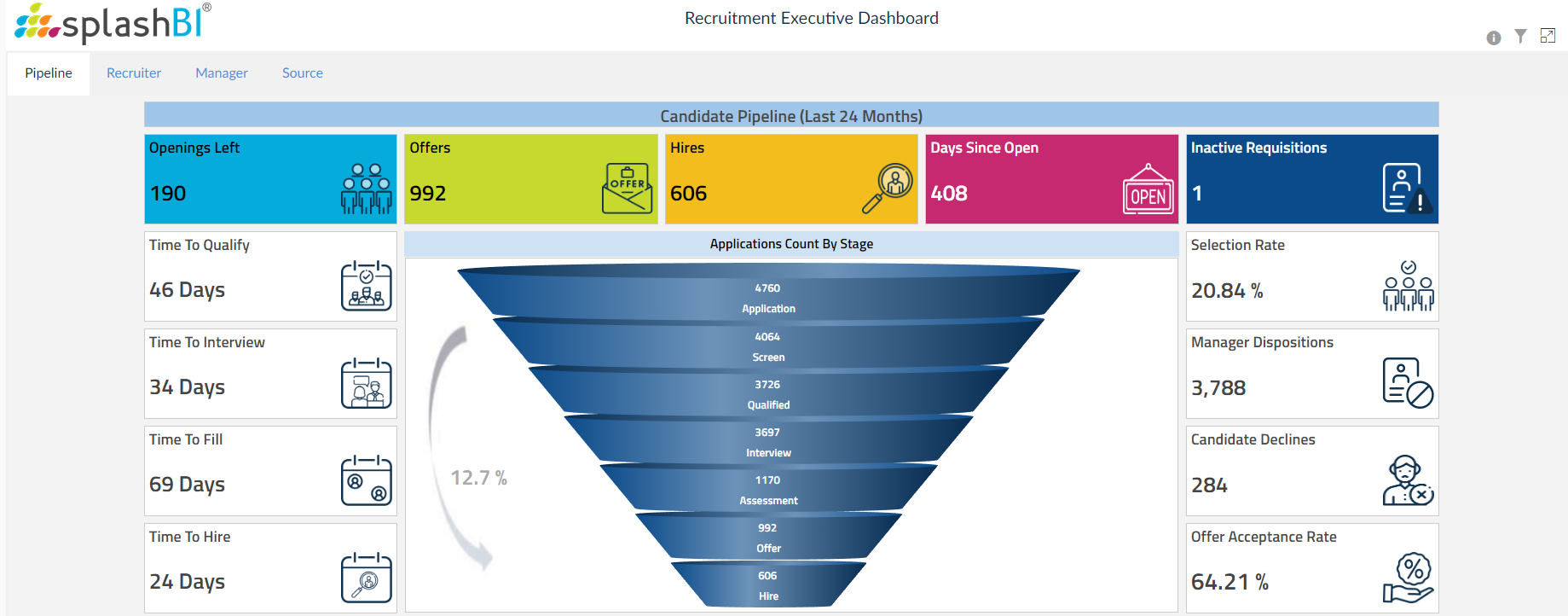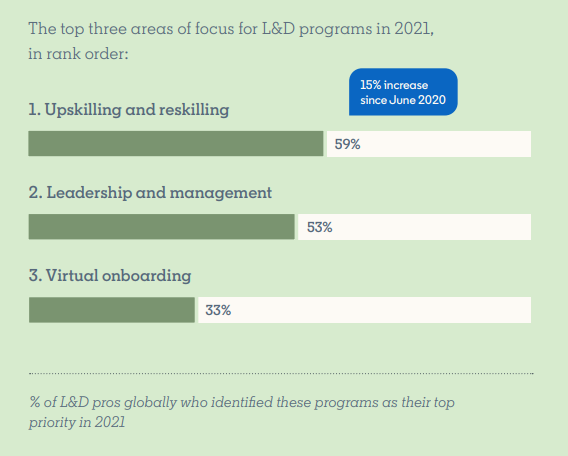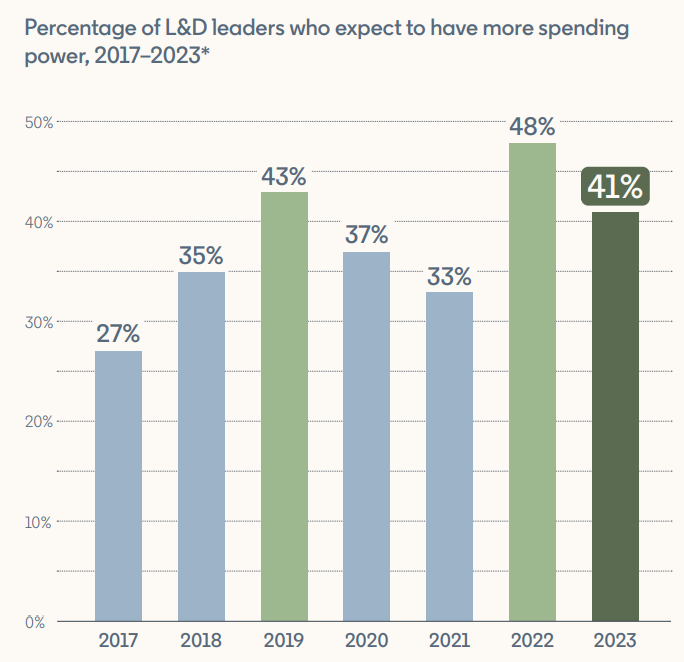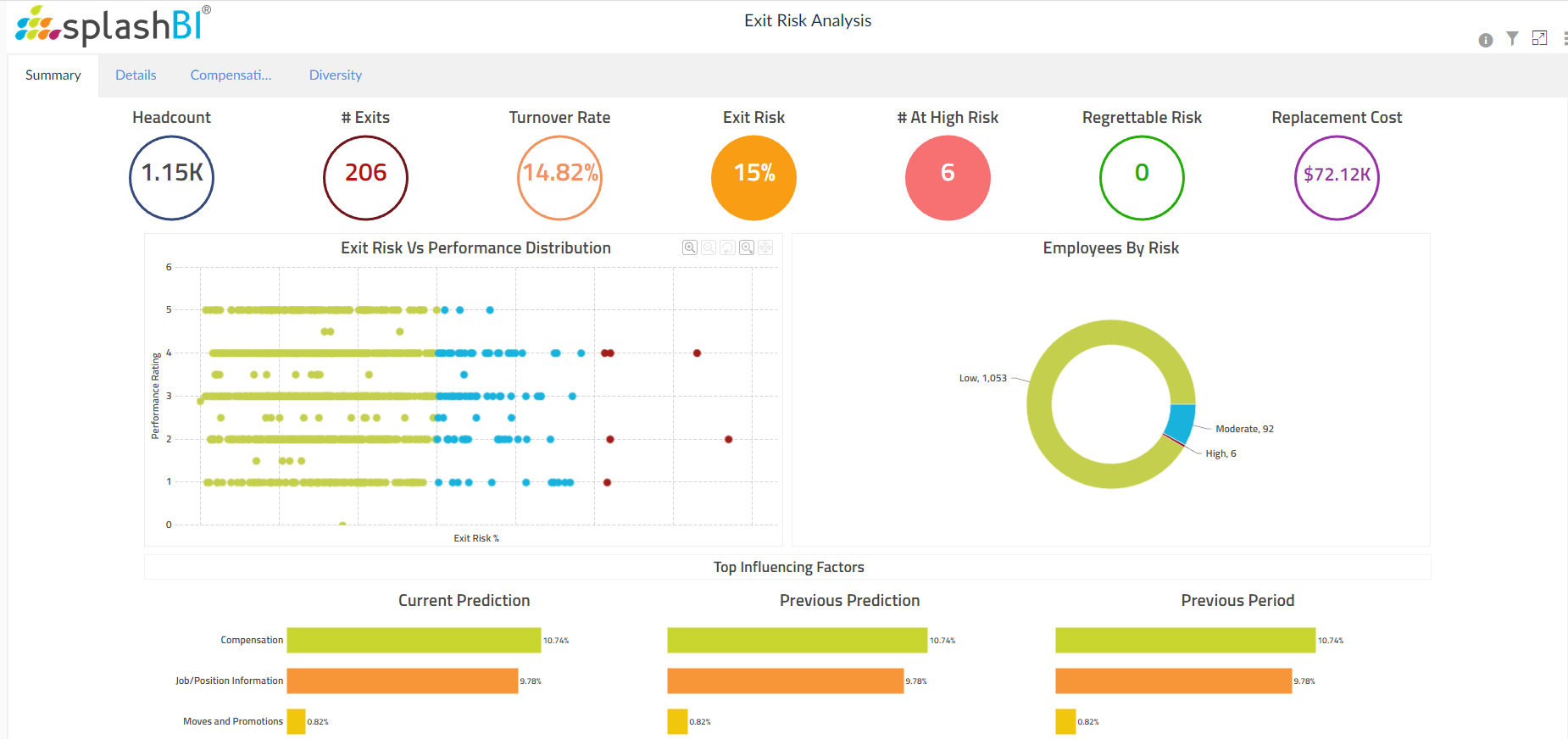Role of HR leaders and why is there a need to track the HR Metrics
HR leaders play a crucial role in an organization by overseeing the human resources function and ensuring that HR strategies align with the overall business goals. Tracking relevant HR metrics is of utmost importance for HR leaders. HR leaders play a crucial role in driving the HR function and supporting organizational success. Tracking relevant HR metrics empowers HR leaders to make informed decisions, align HR strategies with business objectives, identify trends and challenges, measure HR effectiveness, and ensure compliance and risk management. These metrics serve as a valuable tool for HR leaders to optimize their strategies, demonstrate the value of HR, and contribute to the overall success of the organization.
1. Strategic decision-making
HR leaders need to make strategic decisions that drive organizational success. By tracking HR metrics, they can gather data-driven insights to support their decision-making process. These metrics provide information on critical areas such as workforce planning, talent acquisition, employee engagement, training and development, performance management, and diversity and inclusion. Understanding these metrics enables HR leaders to identify strengths, weaknesses, and areas for improvement, leading to more effective decision-making.
2. Aligning HR strategies with business objectives
HR leaders are responsible for aligning HR strategies with the organization’s overall goals. Tracking HR metrics allows them to evaluate the impact of HR initiatives on business outcomes. By monitoring relevant metrics, HR leaders can assess whether their strategies are contributing to improved performance, increased productivity, reduced turnover, enhanced employee satisfaction, and other key organizational objectives. This alignment ensures that HR efforts are focused on areas that deliver the greatest value to the organization.
3. Identifying workforce trends and challenges
HR leaders need to stay informed about the trends and challenges within their organization’s workforce. Tracking HR metrics provides valuable insights into employee demographics, turnover rates, absenteeism, training and development needs, and other workforce-related factors. By analyzing these metrics, HR leaders can identify emerging trends, potential issues, and areas of concern. This initiative-taking approach enables them to address challenges promptly, implement appropriate interventions, and ensure that the organization has a skilled and engaged workforce.
4. Measuring HR effectiveness
HR leaders are accountable for demonstrating the effectiveness of HR programs and initiatives. Tracking HR metrics allows them to measure the impact of HR practices on key performance indicators. These metrics can include metrics related to employee satisfaction, retention rates, training effectiveness, leadership development, and diversity and inclusion efforts. By monitoring these metrics, HR leaders can evaluate the success of their strategies, adjust as needed, and highlight the value HR brings to the organization.
5. Compliance and risk management
HR leaders have a responsibility to ensure compliance with labor laws, regulations, and industry standards. Tracking HR metrics related to compliance, such as training completion rates, safety incidents, and diversity metrics, helps HR leaders monitor adherence to legal requirements. By identifying potential compliance risks through metrics, HR leaders can take initiative-taking measures to mitigate these risks and avoid legal issues.
Tracking key HR metrics in 2023 helps organizations make data-driven decisions, measure performance, address challenges, align HR with organizational goals, ensure compliance, and benchmark against industry standards. It plays a vital role in optimizing the HR function and contributing to the overall success of the organization.
Following are few more reasons why there is an absolute need to track the HR metrics: –
1. Data-driven decision-making
Tracking HR metrics provides valuable data that can help HR professionals and organizational leaders make informed decisions. By analyzing these metrics, organizations can identify trends, patterns, and areas for improvement. Data-driven decision-making allows for strategic planning, resource allocation, and the implementation of effective HR strategies.
2. Measure organizational performance
HR metrics provide insights into the overall performance of the organization and its workforce. By tracking metrics such as employee productivity, turnover rates, and absenteeism, organizations can gauge how well they are utilizing their human capital and identify areas where performance can be enhanced.
3. Identify HR challenges and opportunities
HR metrics help identify challenges and opportunities within the HR function. For example, metrics related to recruitment and retention can highlight areas where the organization may be struggling to attract or retain top talent. By identifying these challenges, HR professionals can develop targeted strategies to address them and improve overall HR effectiveness.
4. Align HR with organizational goals
Tracking key HR metrics enables HR departments to align their activities and strategies with the broader goals of the organization. By understanding how HR initiatives impact metrics such as employee engagement, talent development, and diversity and inclusion, HR professionals can ensure that their efforts are contributing to the organization’s success and bottom line.
5. Monitor compliance and legal requirements
HR metrics can help organizations ensure compliance with labor laws, regulations, and industry standards. Metrics related to employee training, safety incidents, and diversity can assist in monitoring compliance with legal requirements and identifying any potential areas of risk.
6. Benchmark against industry standards
Tracking HR metrics allows organizations to benchmark their performance against industry standards and best practices. By comparing their metrics to those of similar organizations, they can identify areas where they excel or fall behind and take appropriate actions to improve.
Now that we know the importance to track the HR metrics, here are the key HR Metrics to Track in 2023
1. Talent retention and employee engagement go hand in hand
These HR metrics help them understand their ability to retain top-performing employees and mitigate the costs and challenges associated with high turnover and it helps in Cost Savings. High employee turnover can be costly for organizations. Tracking talent retention allows organizations to identify areas where they may be losing valuable talent and incur recruitment and training costs. By analyzing retention metrics, such as turnover rates and reasons for departure, organizations can implement strategies to reduce turnover, improve employee satisfaction, and save costs associated with hiring and onboarding new employees.
Employee Engagement and Satisfaction is another reason talent retention metric is important. High employee retention is often indicative of a satisfied and engaged workforce. Tracking talent retention helps organizations identify and retain high-potential employees for key positions within the company. By analyzing retention data, organizations can identify individuals who have demonstrated exceptional performance and potential for growth. This information is valuable for talent management and succession planning, ensuring that there is a pipeline of talented individuals ready to step into critical roles when needed.
High turnover can disrupt organizational stability and lead to a loss of institutional knowledge and expertise. Tracking talent retention allows organizations to assess the stability of their workforce and identify areas where knowledge retention may be at risk. By implementing strategies to retain valuable employees, organizations can ensure the continuity of critical skills, knowledge, and experience within the organization. Organizations with high employee retention rates tend to have a positive employer brand and reputation. According to Forbes, 47% of the HR leaders, in 2023, give more emphasis on employee experience.
Tracking talent retention enables organizations to showcase their ability to attract and retain top talent, which can enhance their employer brand and make them more attractive to potential candidates which will lead to increased interest from high-quality candidates, making the recruitment process more efficient and cost-effective. By tracking talent retention, organizations can identify areas for improvement in employee development and engagement strategies. Analyzing retention data can help identify patterns or trends related to employee career development, training opportunities, performance feedback, and work-life balance. This information can be used to design and implement targeted initiatives that address the specific needs and preferences of employees, leading to increased engagement and higher retention rates.
2. DEIB Metrics
Another HR metric that should matter in any People Analytics solution is Diversity, Equity, Inclusion, and Belonging (DEIB) metrics and tracking it is of utmost importance for organizations committed to creating a diverse and inclusive workplace.
By tracking DEIB the organizations can assess the progress in creating a diverse and inclusive work environment. By measuring diversity in terms of representation across various dimensions (such as gender, ethnicity, age, and more), organizations can gauge if their workforce composition aligns with their diversity goals. It helps identify gaps and areas for improvement. DEIB metrics help organizations identify barriers and biases that may exist within their systems, policies, and practices. Tracking DEIB metrics can enhance talent acquisition and retention efforts. Organizations that prioritize diversity and inclusion often attract a broader range of candidates and can leverage diverse perspectives and experiences leading to more innovative solutions and better decision-making. A diverse workforce can bring fresh ideas, challenge the status quo, and foster a culture of innovation. By showcasing a commitment to DEIB, organizations can enhance their employer brand and attract top talent.
3. Recruitment
Tracking recruitment metrics is important for organizations as it provides valuable insights into the effectiveness and efficiency of their recruitment processes. Tracking these HR metrics allows organizations to assess the efficiency of their hiring process. Metrics such as time to fill, time to hire, and applicant-to-hire ratio provide insights into the speed and effectiveness of recruitment efforts. By analyzing these metrics, organizations can identify bottlenecks, streamline their processes, and reduce time-to-hire, ensuring that vacant positions are filled promptly.

Tracking recruitment metrics helps organizations evaluate the quality of their hires. Metrics such as candidate qualifications, performance ratings, and retention rates provide insights into the effectiveness of the recruitment process in attracting and selecting high-quality candidates. By assessing the performance and longevity of hires, organizations can refine their sourcing and selection strategies to ensure better outcomes and improve the overall quality of their talent pool. Recruitment can be a significant investment for organizations and helps organizations assess the cost-effectiveness of their recruitment efforts. By analyzing these metrics, organizations can evaluate the expenses associated with attracting and hiring new talent, identify cost-saving opportunities, and optimize their recruitment budget.
According to Forbes, 46% of the HR leaders, in 2023, give more emphasis on quality of recruiting. Tracking recruitment metrics allows organizations to evaluate the performance of different recruitment sources or channels and can identify which channels yield the most qualified candidates, have higher conversion rates, and provide better long-term retention. This data helps optimize recruitment strategies, allocate resources effectively, and invest in the most productive channels. Understanding the candidate’s experience throughout the hiring process is also crucial which can lead to better talent attraction and a competitive advantage in the labor market.
4. Learning & Development

According to a LinkedIn 2021 report about 59% of Learning and development experts classify upskilling and reskilling as their top priority.
Tracking L&D metrics helps organizations evaluate the effectiveness of their training programs and initiatives in developing employees’ skills and competencies. By measuring metrics such as training completion rates, skills assessment scores, and competency improvements, organizations can ensure that their L&D efforts align with employee development goals and address skill gaps within the workforce. L&D programs play a significant role in employee engagement and retention. L&D initiatives have a direct impact on employee performance.
By tracking L&D metrics alongside performance metrics, organizations can assess the correlation between training and improved job performance. This data helps identify the effectiveness of specific training programs and informs decisions about further development interventions to enhance performance outcomes, in identifying high-potential employees and potential successors for key roles within the organization.

This HR metrics and analytics allow organizations to measure the ROI of their training initiatives. By evaluating metrics such as cost per participant, training effectiveness, and business impact, organizations can assess the financial and strategic value of their L&D investments. This data helps demonstrate the impact of training programs on organizational outcomes, making a compelling case for continued investment in employee development. In the year 2021, about 48% of companies invested in the training program of the employees. More so tracking these key metrics helps ensure compliance with regulatory standards and provides evidence of training completion for audits and regulatory purposes.
5. Turnover – Every organization’s pet peeve.
Tracking turnover is important for organizations as it provides valuable insights into employee retention, engagement, and overall organizational health.
Turnover can be costly for organizations due to the expenses associated with recruiting, hiring, onboarding, and training new employees. Tracking turnover allows organizations to quantify the monetary impact of employee departures and assess the cost-effectiveness of their retention strategies. By identifying high turnover areas or departments, organizations can develop targeted interventions to reduce turnover and save costs. Tracking turnover helps organizations identify potential gaps in talent management and succession planning. High turnover rates in key positions can indicate risks to organizational stability and continuity. By understanding the turnover patterns, organizations can proactively develop strategies to retain and develop top talent, ensuring a smooth transition and minimizing disruption when key employees leave.
High turnover rates can be a symptom of low employee engagement or job satisfaction. By analyzing the reasons for turnover and conducting exit interviews, organizations can gain insights into workplace dynamics, culture, leadership, and other factors that impact employee satisfaction and then organizations can make data-driven decisions to refine their strategies.
6. Do you have the skills
Tracking skill gaps is important for organizations as it helps them identify areas where employees’ skills and competencies do not align with the requirements of their roles or the organization’s strategic objectives.
This HR metrics enable organizations to identify the specific skills and competencies that employees need to acquire or enhance. This information helps inform talent development and training programs, allowing organizations to design targeted initiatives to bridge the identified gaps.
By providing relevant training opportunities, organizations can improve employee performance, increase job satisfaction, and enhance overall productivity. Skill gap analysis supports strategic workforce planning by identifying critical skills that may be lacking within the organization. It helps organizations anticipate future talent needs and align their recruitment, training, and development strategies accordingly and enabling organizations to thrive in a dynamic and competitive landscape.
SplashHR- Data never lies and data never dies.
SplashHR by SplashBI is an advanced HR Reporting solution with configurable dashboards and metrics for diverse business needs. It centralizes HR data from various sources, streamlining management and eliminating manual data gathering. Its built-in connectors automate data updates for real-time insights. The platform offers visually appealing data visualization, customizable reports, and intuitive interfaces for straightforward interpretation and stakeholder communication.

Key features include pre-built analytics models for HR metrics like engagement, turnover risk, diversity, and talent acquisition. HR professionals can explore and analyze data independently with self-service capabilities, avoiding reliance on IT or data science teams. Additionally, benchmarking allows organizations to compare their metrics against industry standards for performance evaluation and improvement opportunities.
There is more…!
SplashHR enables HR professionals to customize analytics based on their specific needs and organizational goals. Users can define their own metrics, set benchmarks, and create tailored reports and visualizations. This flexibility allows HR teams to focus on the metrics that matter most to their organization and gain actionable insights from the data.

It also offers advanced analytics capabilities, including predictive analytics and data modeling. These features enable HR professionals to go beyond simple descriptive analytics and uncover predictive patterns and trends. By leveraging predictive analytics, HR teams can anticipate future workforce needs, identify flight risks, and make data-driven decisions to optimize talent management strategies.
SplashHR emphasizes data visualization techniques to present HR insights in a visually compelling and understandable manner. Through charts, graphs, and interactive visualizations, HR professionals can effectively communicate complex data to stakeholders, making it easier to convey the significance of HR metrics and influence decision-making.
Conclusion
Tracking the key HR metrics- talent retention and employee engagement, DEIB, recruitment, L&D, turnover and skill gap, in 2023, empowers organizations to make
- informed decisions,
- optimize HR strategies,
- enhance employee experiences,
- foster diversity and inclusion,
- improve talent management practices, and
- drive organizational success in an increasingly competitive and dynamic business landscape.
By leveraging data and analytics, organizations can align their HR practices with their strategic objectives and create a thriving and engaged workforce. SplashHR is one of the people analytics tools that will help HR leaders and organizations to accomplish that feat.













